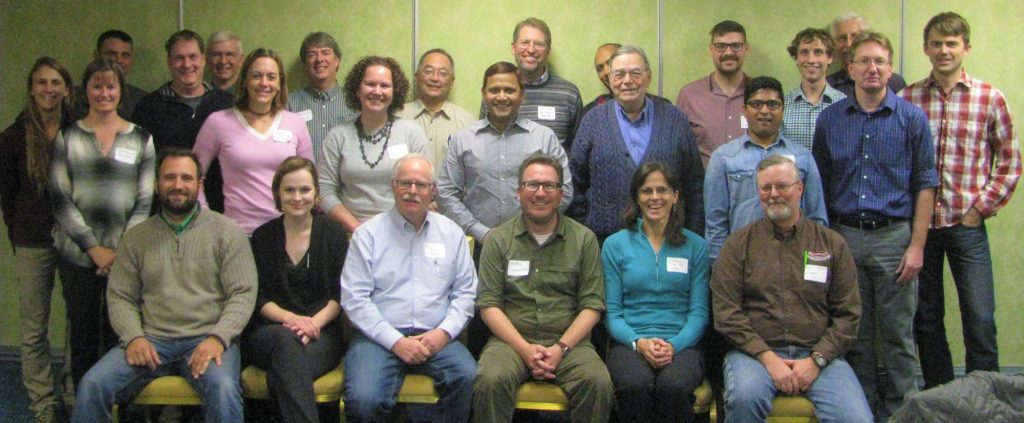Bacterial diseases and the allium leafminer are among the issues on the radar this year for the W-3008 multistate research committee. The group, which includes onion specialists and stakeholders from across the U.S., discussed these topics and a long list of others during its annual meeting, held Dec. 4, 2017, in Grand Rapids, Michigan.
The W-3008 project originates from the W-1008 project, which focused on onion thrips and Iris yellow spot virus, and the W-2008 project, which broadened to include other onion diseases and pests. The project, now in its 11th year, has facilitated collaboration among researchers on efforts including securing larger federal grants.
Bacterial Diseases
Bacterial diseases of onion were problematic during the 2017 growing season in some states including California, New Mexico and Washington, according to state reports shared at the meeting. Washington State University’s Tim Waters said that 2017 appears to be one
of the worst years for bacterial rots in the Columbia Basin for some growers, with several farms experiencing 30 to 40 percent bacterial bulb rots in red cultivars at harvest or soon after harvest. This appears to have been correlated to high heat in late July and early August combined with high relative humidity caused by severe wildfire smoke for several weeks during late maturity of the crops.
Bacterial diseases continue to be an area of focus for many research programs. Beth Brisco reported on the work being done at Michigan State University. In evaluating the interaction between bacterial foliar diseases and onion thrips, researchers found that protecting onions from thrips damage significantly reduced disease severity. They are also evaluating sources of bacterial inoculum through weed and seed sampling and have isolated suspect bacteria. Other trials are looking at the effects of nitrogen fertility, temperatures, humidity and planting date on bacterial disease incidence and severity.
Allium Leafminer
Beth Gugino brought the group up to speed on Pennsylvania State University’s work on allium leafminer, a pest reported in Pennsylvania, New York, New Jersey and Maryland. Although the pest is limited to the Northeast, it is increasing in geographic distribution fairly rapidly, according to researchers.
Plants affected by the pest display symptoms including a line of oviposition marks on the leaves as well as serpentine mines. The larvae burrow down into the bulb and pupate. All alliums are susceptible, and long-distance transport on planting material is a potential concern.
A Pennsylvania State University entomology lab was able to rear a colony of leafminers, which is promising for conducting future research. Plans include W-3008 Plans for 2018 comparing infestation levels among different allium hosts and cultivars, evaluating planting dates for bunching onions and conducting insecticide efficacy trials.
New Website
Launching a new website is also on the W-3008 committee’s to-do list for early 2018. The old site, www.alliumnet.com, has been dormant since Colorado State University researcher Howard Schwartz retired in 2015.
Bhabesh Dutta and Joe LaForest with the University of Georgia are building a new site at www.alliumnet.bugwoodcloud.org. The site will focus on collaboration among research, extension and industry. They are requesting input on useful resources, linksand other information to include on the site.
Officers, Meeting Plans
Rounding out the annual meeting was the election of new officers and scheduling of future meetings.
The 2018 officers are Christy Hoepting, Cornell University, chair; Beth Gugino, Pennsylvania State University, vice-chair; Bhabesh Dutta, University of Georgia, secretary; and Lindsey du Toit, Washington State University, past-chair.
The 2018 W-3008 annual meeting will be held Nov. 13 in conjunction with the Pacific Northwest Vegetable Association Annual Convention and Trade Show, scheduled for Nov. 14-15 in Kennewick, Washington



